There are many stories of wolves, witches, and werewolves in Limousin, but happily, this region seems to be relatively vampire-free. If you are visiting France you might be travelling south to Vernet-Les-Bains seeking out the amazing Abbay Saint-Martin du Canigou which featured in the book ‘The Historian’ by Elizabeth Kostova, if so, stay in our Bed & Breakfast or gite en route, and rest in this beautiful, if forgotten, part of France on the borders of the Dordogne, Limousin, and Charente.
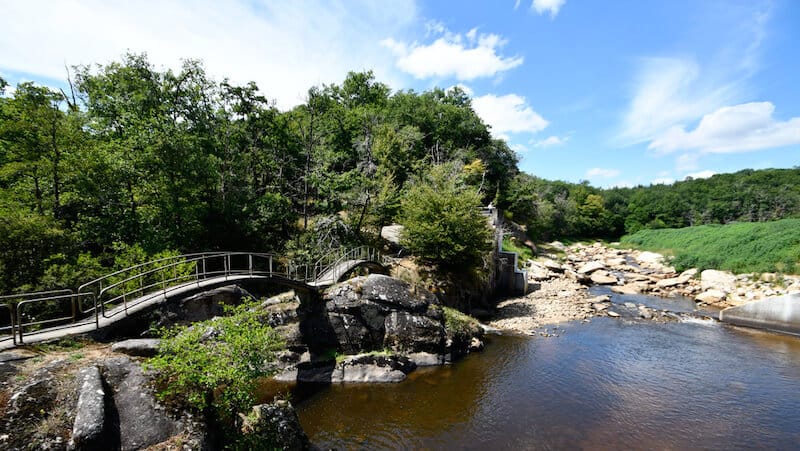
Limousin, Land of Lakes and Rivers
I live in Limousin. This forgotten heart of France will remind you of a lifestyle and landscape long lost in many parts of the ‘modern’ world. Fields full of wildflowers, roads lined with oak woods, and bracken, and poppies, and empty of traffic. Quiet days and nights full of the song of the nightingale and the frogs. Wild boar shelter in the forests and buzzards sail over the meadows hunting for mice. Deer graze in the mornings and evenings, the dark skies are brilliant with stars and the landscape is studded with fortified chateaux and ancient, ruined castles.
Elizabeth Kostova, author of ‘The Historian’ describes a land such as Limousin: “But what comes to my mind are mountains of savage beauty, ancient castles, werewolves, and witches – a land of magical obscurity”. This is not Limousin, but Transylvania, yet, should you replace the word ‘mountains’ with ‘landscape’ or hills, then this description fits very well both the magnificence and mystical qualities of, Limousin, the hidden heart of rural France.
Land of Wolves and Witches
For those good souls who have read the book, (and if you have not, then you most certainly should), you will know that it is about Vampires and that a part of the story centers around France. If you are reading this and think to pay a visit here, to France, you should be warned that there are areas where stories of vampires abound, and for your guidance, I provide a map, that you may judiciously choose the clean and unpolluted lands such as ours. Should you decide, however, to take a sojourn in the Limousin, you will be much relieved to hear that it is, relatively speaking, free from that peculiar plague. However, I feel that it is my duty, “perceptive reader”, to warn you that while you may not need to lie awake at night decked out with flowers of garlic, you should be aware that Limousin is, indeed, a land of magic, of wolves and witches, of charms and curses. Perhaps, I should add that this is a region that abounds in tales of sorcery and, above all, the were-wolf. Or perhaps not, I hear you saying.
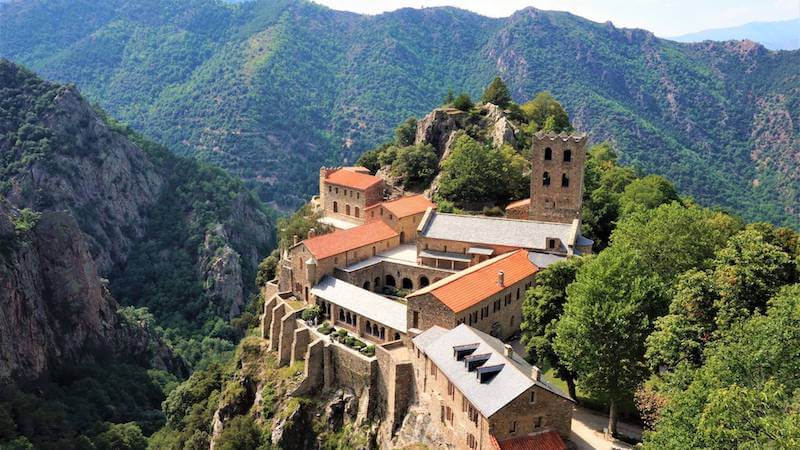
Abbaye Saint-Martin du Canigou
For those of you who seek out the lairs and ‘resting’ places of the undead, I can give you this advice. If you travel from the north, from the lands of Belgium, the low countries, Italy or that greater Britain, land of the Angles and you seek that refuge or sheltering place of Vlad Dracula, in distant Roussillon and, despite all warning, seek that sunny shore of the southern sea, or those mountains of the Pyrenese Occidental, then stop a while in the gently rolling hills with fat, tan cattle who graze the lush grass and nourishing herbs of Haute-Vienne. Stay at our homely farm and rest awhile, relax and plan the climb to that miraculous monastery, perched high above the mountain town of Vernet-Les-Bains Abbaye Saint-Martin du Canigou, striking out for the hot parched slopes of the southern highlands only having sipped the healing waters of our sacred springs.
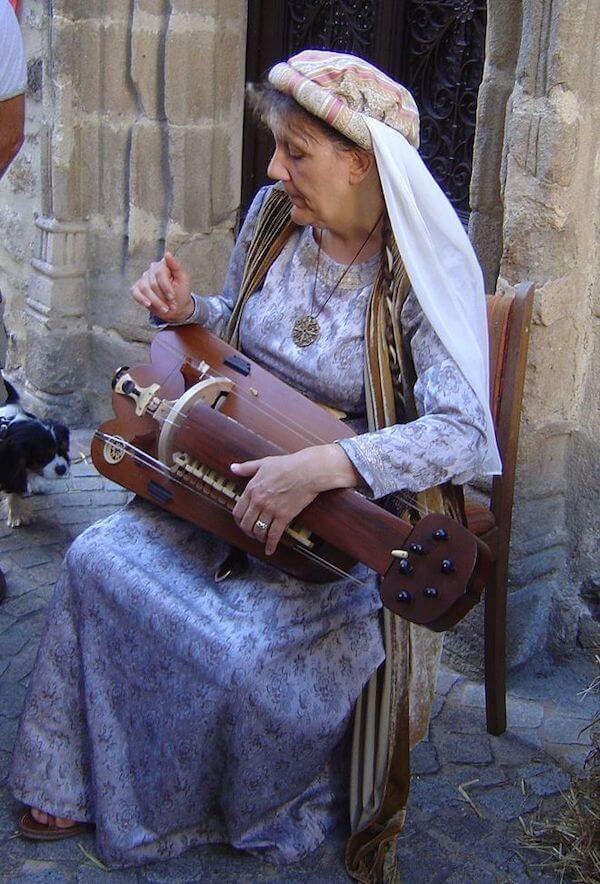
The Mediaeval Festival of Rochechouart
If you have chosen wisely the dates of your journey, you may have the good fortune to chance on the great festival of Rochechouart – a celebration of all things mediaeval. There you can hear the music, see the costume, eat the roasted hogs, dance the dance of those who laid the very foundation stones of that great and ponderous chateau seated so solidly on its craggy promontory overlooking the confluence of the rivers Vayres and Grain. Here, if you are fortunate, and you have consulted those who know the day and month of this festival of time gone bye can see the wolves – the wolves upon the very streets of that ancient town.
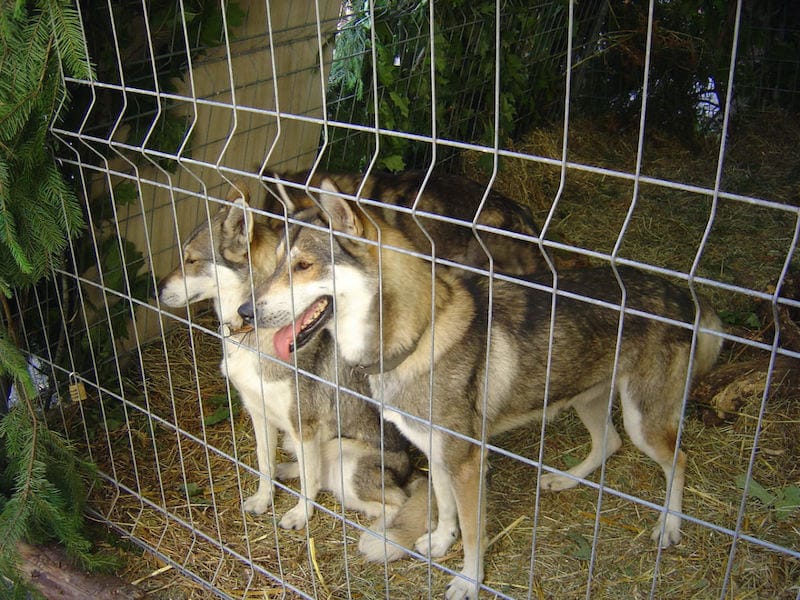
The Wolves of Limousin
But the wolves are not such distant neighbours of the good farmers of these parts. The last of these feared beasts were killed, for better or for worse in Chateau le Forêt, scant 30 kilometres from our Auberge. And now, though loathe to let the scourge of those feared beasts loose again to roam and hunt the forests and plains of Limousin, the rulers and the people of the region have set the beasts all closed about, that we might see their grey and black coats and hear their nightly cries. Go and see for yourself The wolves of Chabrieres, just outside the town of Gueret, where they have built a place devoted to the history and legend surrounding these ancient creatures. Here they fence and imprison thirty of the beasts. On the same site, there is also a shrine to the stars, they call a planetarium, which takes advantage of the night sky which you have lost in the modern world. In the summer there are nocturnal stories told to keep alive the fearsome legends and mysteries of time gone past. If you have not the time or inclination to pass that way, look here at the scenes that you will miss.
The Tale of the Loup-garou of Rochechouart
I will tell but one of many stories that will raise the hackles on your neck and force you, at every rustle and scratching in the house to look over your shoulder and, Christian or not, you will make the sign of the cross, or use the talismans of your faith, to try to guard yourself against the curséd Loups-garous.
The Story of the Werewolf of Rochechouart as recounted by monsieur Pierre Louty in his learned tomb ‘Limousin Ensorcelé’
First, dear reader, you should know that the Loups-garous, (or Lous Leberous in that ancient tongue of the grandmothers of this land, that which now, is called Patois) are thought to be in league with the devil himself. The Loups-Garou runs through the countryside in the night of the full moon, in the skin of a wolf tormenting those souls who have the misfortune to be about so late. The curse is passed from parent to child when a gift is made of the skin upon the demise of the were-wolf.
The werewolf, according to these legends of Limousin, had devilish talents. They could cause hail to fall from the sky (grêle), to destroy neighbours crops and to steal the fat from the cow. The Abbé Duléry, in a book consecrated at Rochechouart, wrote: Once upon a time, a century or so ago, the commune of Rochechourt contained a village called Roumagnat. In this village lived a family touched by the curse. The father, in the skin of the wolf, tormented his neighbours, especially those at Biennat, until, one day he fell ill. He looked around for one to bear the burden of the Loup-Garrou, and chose a nephew whom he called to his bedside. “Here,” he whispered, “take this as a symbol of my affection for you, for I am about to die. Take this present and show it to no-one. The boy, thinking it to be a great treasure was full of joy. Soon night fell. Impatient to know what the pack enclosed, he opened it up. Immediately the skin jumped upon his back. Suffocating, the boy arrived at La Crois de Blancharaux where, that very night, they celebrated the sabbat.
Not only was the Limousin infected with the cursed werewolf, but was also beset with Sorcieres, or witches.
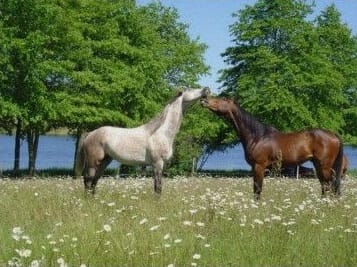
The Truth about Limousin
Surely, you will press me, as I am the proprietor of a chambres d’hôtes in Haute-Vienne, Limousin, and the owner also of a holiday gîte in this very region, and, as such, have no reason to make my future guests so afraid of the supernatural that they should immediately choose a blander yet more secure place to pass their precious leisure time, I should hide these chilling facts. That I should point out how lovely are our lakes, how green the rolling hills beset with pretty villages built from moonstone. You will exhort me to describe the woods of chestnut trees and oak that battle for space with verdant pastures scattered with flowers like a mediaeval tapestry. And its chateaux are not all ruins, far from it.
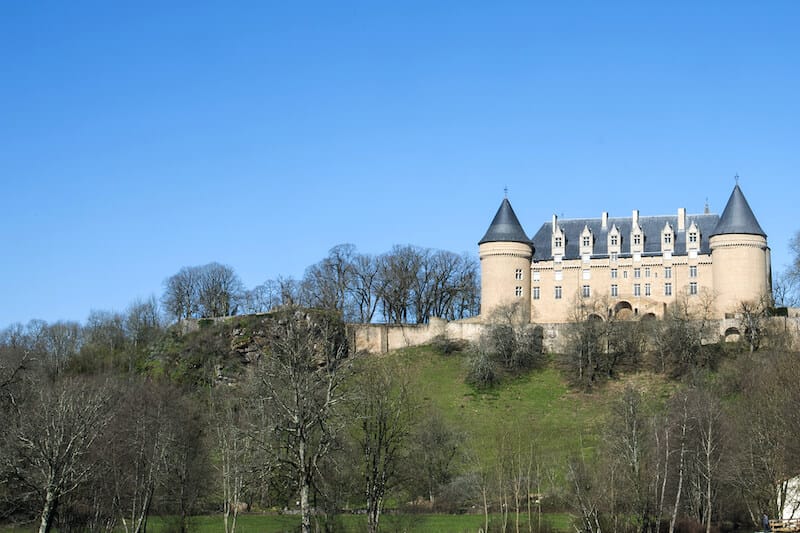
Are you brave enough to visit Limousin?
You will point out that I should tell you of all the fairytale castles full of ancient furniture, pictures and murals, or those which now fulfil an altogether different role, such as the proud and towering Chateau of Rochechouart which is now the show space of arts of today. Nothing could be further from the deep dark tales of the ‘Loup-garou’ as those whose mother tongue is French would describe the were-wolf. I must tell you immediately, that I have been brought up in too strict and moral regime to think like that. Indeed, I take the view that I would be shirking my responsibilities to you, fair traveller, should I not show you the other side of this land of magic.
Not so long ago, reader, if you chanced to wake, you find the darkened air not only disturbed, as now, by frog and owl, but rent asunder with the howling of the wolf, and you would surely shiver. Never was there a more blood-curdling and chilling sound. For those who have never hear the lonely call through woods and rocks, take a little time to dally here and, with closed eyes, imagine how those workers of land would have feared for their sheep, their livestock and their children.
Are you brave enough to visit Limousin?
Other articles about the Limousin Region
The Route of Richard the Lion Heart
French-castles: The Chateau of Montbrun
Modern Art in Rochechouart
Limousin a favourite holiday destination for families
The Pilgrim Route of Saint Jacques and the Church of Saint Eutrope
A Limousin Scrap Book
